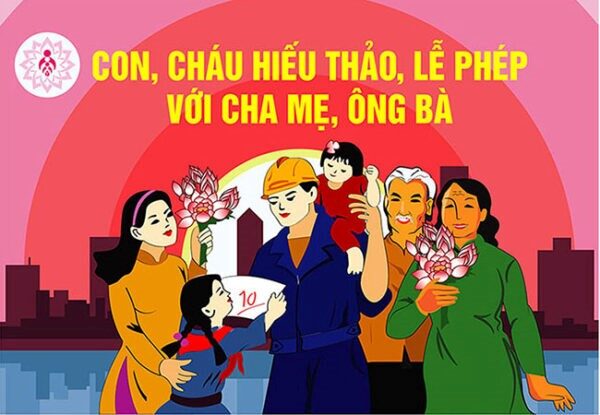
Illustration – Source: Internet
Accordingly, the following groups of basic targets are set out as in the Plan: Target group for building grassroots cultural life; target group for preservation and promotion of cultural heritage values; target group for culture and art; and target group for cultural industry. In which:
The target group for building a grassroots cultural life is set out with specific criteria as follows:
In the period to 2025: Rate of recognition of the title of Cultural Family: 86-88%. Rate of recognition of the title of Cultural Village: 65%; Rate of recognized cultural residential groups: 75%; Rate of hamlets, villages having cultural houses: 100%; 70-73% of agencies, units and businesses are recognized as meeting cultural standards. 100% of districts, townships have cultural and sports centers at district level; 100% of cultural hamlets, villages, residential groups or community activity spots.
In the period to 2030: Rate of recognition of the title of Cultural Family: 89-90%; Rate of villages and villages recognized as Cultural Villages: 70%; Rate of recognized cultural residential groups: 80%. 100% of districts, towns have cultural and sports centers at district level. 100% of hamlets, villages and residential groups have cultural houses meeting the criteria as prescribed. 75% of agencies, units and businesses are recognized as meeting cultural standards. 100% of industrial parks strive to have cultural houses or cultural activity spots to serve workers and employees.

Illustration – Source: Internet
For the target group for preserving and promoting the value of cultural heritage by 2025, Hanoi strives to complete the targets:
Over 95% of special national-ranked relics and about 70% of national-ranked relics are expected to be restored and embellished. It is also planned to complete the targets approved in the Resolution No. 11/NQ-HDND dated July 13, 2012 of the City People’s Council on the planning of cultural development in Hanoi to 2020, orientation to 2030 in Hanoi; Every year, about 20% of degraded city-level relics are repaired and embellished by human resources with state and socialization budget. Resolution No. 05-NQ/TU dated September 20, 2021 of the Executive Committee of the Hanoi Party Committee on the City’s socio-economic development plan and 5-year medium-term public investment plan 2021-2025 . In particular, it is clearly stated to focus on investment in cultural institutions and historical relics (especially Thang Long Imperial Citadel, Kinh Thien Palace, Co Loa, Ngo Quyen Temple) in the 2021-2025 period. 15 relics are expected to be scientifically documented and included in the National Intangible Cultural Heritage List. Target number of monuments ranked and upgraded is: 03 Special National Monuments; 12 National level monuments; and 100 City level relics.

Illustration – Source: Internet
The target group of culture and art includes: over 18 new staged annually performed plays; over 3000 annual professional performances; and over 10 films of documentaries annually produced.
For the target group on the cultural industry by 2025: The city sets the target of the capital’s cultural industry to become an important economic sector, creating a new driving force for socio-economic development; improve relatively synchronous and modern infrastructure; improve institutions and prepare for professional cultural industry development; create cultural industrial products of high quality, diversity, brand, and cultural identity of Hanoi which are competitive with other countries in the region; maintain and develop the creative city brand; strive to contribute about 5% of the City’s GRDP.
In the period to 2030: The cultural industry of the capital is planned to basically become a spearhead economic sector, strongly promoting the development of other industries and fields. Hanoi is among the top cities with the most developed cultural industry and an influential creative city in Southeast Asia. The cultural industry is expected to contribute about 8% of the City’s GRDP with the investment increased by at least 2% of the total annual budget expenditure.
Viet Thanh

